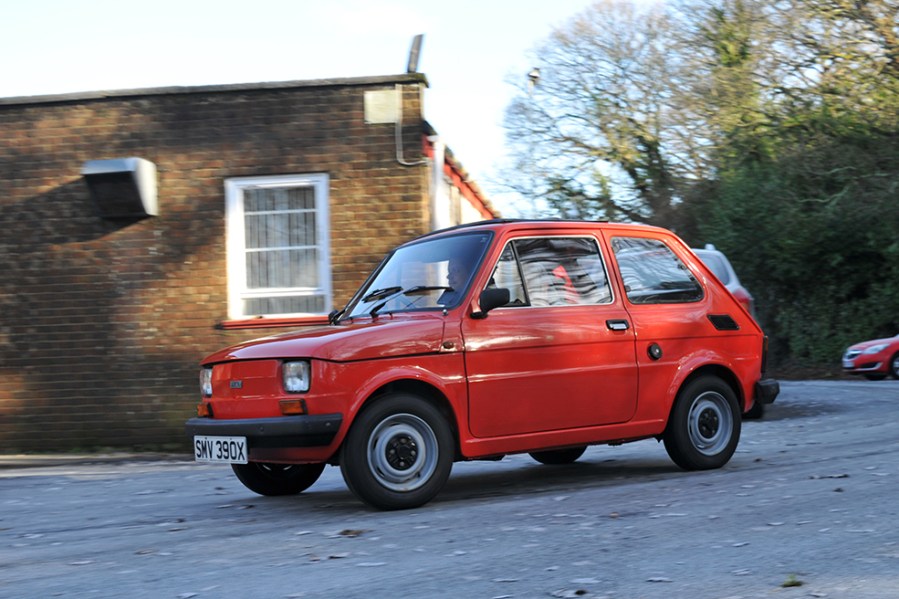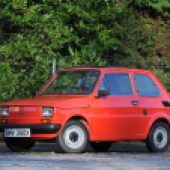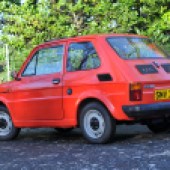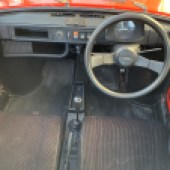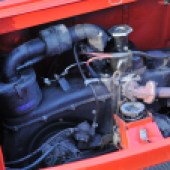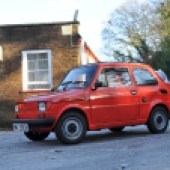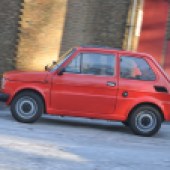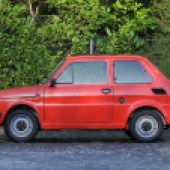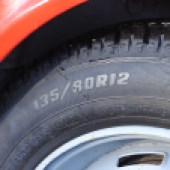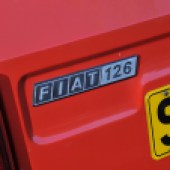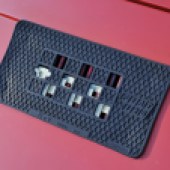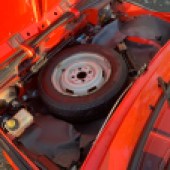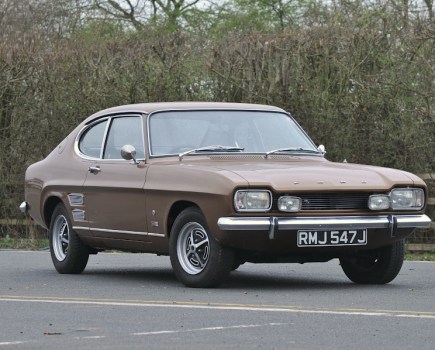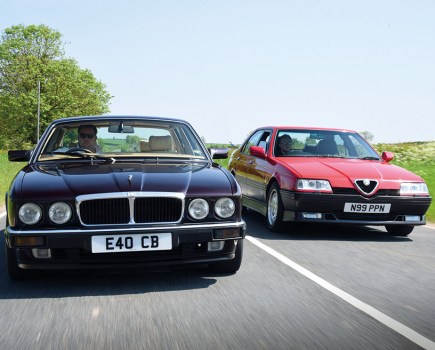The Fiat 126 was the straighter-edged replacement for the legendary 500 but has never been as desirable for UK buyers. We find out if they’re missing a trick
Words: Jeff Ruggles Images: Paul Wager
On the face of it, the Fiat 126 had a tough gig. Not only did it have to follow in the footsteps of the legendary 500, but it would also need to do so without the instantly recognisable cutesy styling of its predecessor. And with the 500’s status further elevated by modern, 2007-on car, the 126 is somewhat forgotten outside enthusiast circles – in the UK at least.
But while the 126 never reached the 500’s popularity in western Europe, it would sell in greater numbers thanks to its unexpected role as the people’s car of Poland. Indeed, nearly three quarters of all the 126s built would be produced there, contributing to a production run a decade longer than the 500 could manage. Were all these buyers on to something that we largely missed?
Launched in 1972 and arriving in Britain the following year, the 126 retained the 500’s basic structural and mechanical layout, with a 594cc air-cooled two-cylinder engine at the back driving the rear wheels despite Fiat’s move to front-wheel drive elsewhere in its range. Producing just 23bhp, it was almost a lone rear-engined challenger in a market sector increasingly affluent Europeans were turning their back on by the early 70s, but its boxy body styled by ex-Ghia man Sergio Sartorelli looked more contemporary and echoed the larger 127 model. It could also boast greater interior space than the 500 and was safer thanks to a more enclosed fuel tank, dual-circuit brakes and a collapsible steering column, while the gearbox now featured synchromesh on all but first gear.
The 126 was initially produced at the newly opened Cassino plant in Italy, but was soon being built in other territories. Indeed, some 3.3 million of the 4.6 million cars built would be produced by FSM in Poland at plants in in Bielsko-Biała and Tychy. Polish-built cars were exported in strong numbers too, including those marketed in Italy once its own domestic production had ceased in 1980.
To help boost the car’s appeal against increasingly tough competition, Fiat quickly boosted the 126’s meagre specifications. From January 1973, continuing the tradition of the Topolino and then the 500, a canvas sunroof was made available. Then, at the beginning of November 1976, the new-top-of-the-range Personal 4 made its debut at the Turin Motor Show, marketed as the De Ville in the UK, and Bambino in selected mainland European markets. This was identifiable by its resin bumpers replacing the original chrome-plated units, and matching side mouldings. Inside, the steering wheel was new and the dash revised to cover up the large expanses of painted metal.
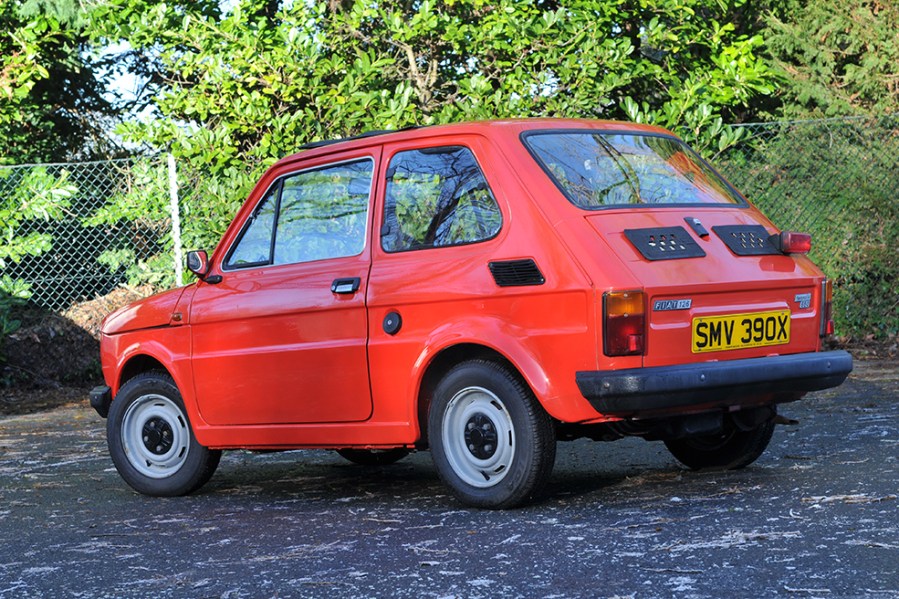
The arrival of a larger 652cc engine added little more torque, even if the power output of 24bhp was almost the same as before. A series of late-1970s special editions then followed to boost the tiny Fiat’s appeal, such as the colour-themed Silver, Black, Red and Brown models.
Changes included the introduction of the 650E-badged model in 1983 with an improved version of the 652cc engine, and from the end 1984, the 126 was given a facelift to create the FL model. All cars now had new plastic bumpers that were better suited to the shape of the body, plus folding exterior mirrors, a new and far more modern dashboard, and several other tweaks. However, an excess of the old parts meant that 126s were still being produced with features like chrome bumpers as late as 1985.
In 1987, UK buyers saw the original air-cooled version replaced by the water-cooled Bis version with its 704cc engine and unfortunate propensity for blowing head gaskets. The 126 would depart the British market in 1992, but the air-cooled version had stayed in production in Poland, with more improvements and options that included front headrests and even a heated rear window.
The launch of the Cinquecento in 1991 should have meant the end for the 126p, but demand meant its demise was continually postponed. Instead, it was modernised with parts from its new stablemate, resulting in the new EL model of 1994. Amongst the changes were the loss of the quarterlights in the doors and the use of Cinquecento mirrors with internal adjustment, plus the loss of the ribbed body sides in favour of a cleaner design. The interior trim was also improved, with Cinquecento parts used for the dash, and electronic ignition fitted. From 1996, the ELX arrived and introduced a catalyst to the mix, with the 126 soldiering on until 2000 when the final ‘Happy End’ editions were produced – 500 in red and 500 in yellow. Remarkably, that was two years after the Cinquecento designed to replace it had been discontinued.
Now, I must confess I was not coming into this classic road test cold. Back in 2010, I bought a 1997 ELX in Krakow and managed to get it back to England in less than 40 hours, including an overnight stop and a visit to Bruges. It wasn’t exactly refined, but I was impressed with how it stood up to the challenge it faced while dicing with trucks and speed merchants on the autobahn, and was keen to rekindle those memories with another go in a 126.

This time though, it would be an earlier car, and an increasingly rare right-hand drive UK market example at that. Offered by South Western Vehicle Auctions in its recent winter sale, it was a remarkably original 1982 car in plusher De Ville spec, complete with a canvas sunroof, and showed under 40,000 miles.
Being a De Ville, you’re greeted with carpets, a proper trimmed dashboard and carpets, which makes it feel posher than a contemporary Mini City inside, if smaller. My later 126 had a regular ignition key starter, but with these earlier cars, you pop the key in and pull the starter lever on the transmission tunnel to fire it into life, while simultaneously raising an adjacent level to control the choke. It hardly feels sophisticated as the little two-pot clatters into life with a level of noise that would have been unrefined even back in period, but it’s all rather endearing. It was certainly a lot more vocal than I remembered, but my later car was produced 15 years after this example and boasted better sound deadening and more creature comforts.
Having picked just about the coldest day of 2023 so far, we were understandably reluctant to push the car too hard in icy conditions, but once warm it proved to be eager if not exactly rapid. Perhaps it’s in my rose-tinted memories, but the later cars feel more useable on dual carriageways and motorways if you’re brave enough, probably on account of the various engine revisions and additions such as electronic ignition.
This this earlier car, however, feels like it would be harder going. Officially the top speed is given as a conservative 65mph, and while it may be possible to wring a few more mph out of it, you wouldn’t want to do it for long without earplugs. With top gear being quite tall, you also need to work it hard in third to bridge the chasm to fourth when getting it up to cruising speed.
But outright speed is not the point of a 126. You don’t need to go fast to enjoy its charm, and if you do want thrills, just plant your foot and don’t lift it – these cars are brilliant fun. With the narrow 135-section tyres combined with freezing conditions, I have no doubt it could’ve been persuaded into some tail-happy action much like I used to enjoy in my ELX, even if I didn’t dare on the day.
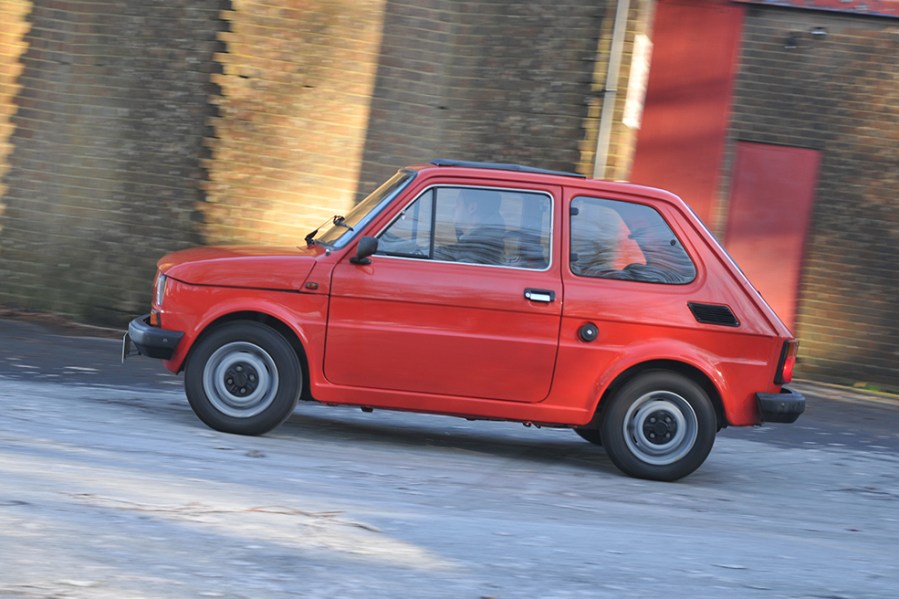
There are several viral videos of 126s being thrown about on Polish rally stages if you want to know just how hard they can be thrown about, and when I was shopping for one in Krakow, the vendors didn’t hold back when performing demonstration drives. The direct steering only adds to the go-kart feel, but it must be said that the all-round drum brakes are pretty awful and certainly keep you on your toes. I remember uprating mine to disc brakes for this very reason.
So, what you have is a small city car that’s slow, noisy and has poor brakes, but you just can’t help but love it – the appeal and fun factor punches well above its tiny weight. As a starter classic to teach yourself about the basics of DIY spannering it’s ideal, and they remain affordable. Granted, good ones have tended to be much closer to £5000 rather than the £2500 they were five years ago, but even the most prized examples will still be usefully cheaper than an equivalent 500.
Personally, I prefer the 126’s more industrialist look anyway. And if it should just happen to arise in conversation that my classic car of choice is air-cooled, rear-wheel drive, rear-engined and rare, then so be it…

